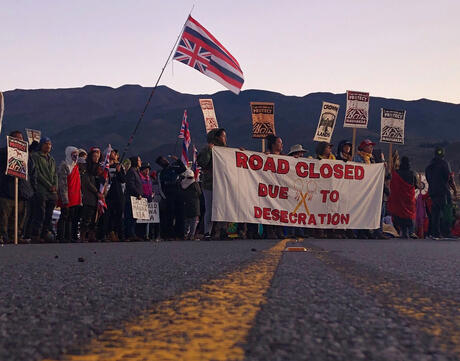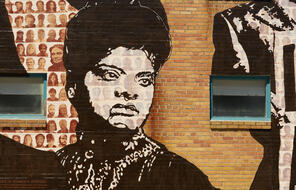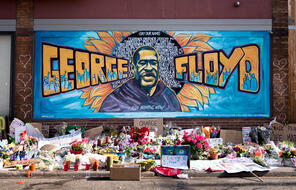
Indigenous Rights and Controversy over Hawaii’s Maunakea Telescope
At a Glance
Language
English — USSubject
- History
- Social Studies
Grade
6–12- Resistance
Overview
About This Mini-Lesson
When the first colonial settlers arrived in what is now the United States of America, the land was not empty, but home to hundreds of diverse indigenous nations. These colonists, and later the US government, seized land from indigenous nations and violated the rights of indigenous peoples. Other countries have similar histories. Today, indigenous groups continue to fight for recognition of their sovereignty—their right to govern their lands and peoples.
Since mid-July 2019, Native Hawaiian protesters have been blocking the construction of the Thirty Meter Telescope (TMT) on Maunakea (also spelled Mauna Kea), the highest mountain in Hawaii. Maunakea has some of the clearest views of the skies in the world, and it also is one of the most sacred places to Native Hawaiians. Many Native Hawaiians view the plan to build this telescope on Maunakea’s peak as the latest affront to their rights over their ancestral lands. The events on Maunakea raise important questions about the US government’s treatment of indigenous peoples and Native Hawaiians’ claims to sovereignty.
This mini-lesson provides historical context for the protests against the Thirty Meter Telescope and helps students explore the reasons why many Native Hawaiians oppose its construction.
Preparing to Teach
A Note to Teachers
Before teaching this mini-lesson please review the following information to help guide your preparation process.
Activities
Activities
Materials and Downloads
Quick Downloads
Download the Files
Get Files Via Google
Resources from Other Organizations
Unlimited Access to Learning. More Added Every Month.
Facing History & Ourselves is designed for educators who want to help students explore identity, think critically, grow emotionally, act ethically, and participate in civic life. It’s hard work, so we’ve developed some go-to professional learning opportunities to help you along the way.
Exploring ELA Text Selection with Julia Torres
On-Demand

Working for Justice, Equity and Civic Agency in Our Schools: A Conversation with Clint Smith
On-Demand

Centering Student Voices to Build Community and Agency
On-Demand












